Watering your lawn is one of the most important parts of maintaining it. Many homeowners struggle to find that healthy balance where the soil isn’t too dry or too wet. Follow these tips to water your lawn in a way that builds deep, strong roots that can keep grass healthy during the summer months.
Both wet soil, and dry soil can set off a number of problems in your lawn. Adding to the difficulty is that we all have such different soil types, climates, and water supply situations. It can be tough to determine a set of standards that apply to everyone when answering questions regarding watering frequency and duration.
Ultimately, you have to be able to learn your lawn and figure out how to adapt to your situation. You have to use whatever tools you have at your disposal, whether it’s an inground system, or just a temporary setup to get you through the dry season. Use these tips below so you’ll be better prepared to come of with a watering plan for your lawn:
1. Water Deep for Established Lawns, and Shallow for New Lawns
For Established Lawns– One of the most important things to keep in mind is you want to develop deep roots in your lawn. Deep roots are more drought tolerant and are overall stronger than a shallow root system. The way to get roots to grow deep is to water for long enough so that the water goes way beyond the surface of your lawn and deeper into the soil. If this is where the moisture is, this is where the roots will go. So instead of light frequent waterings that keep the water towards the surface, you want deep, infrequent waterings that gets the moisture, and roots, to go deeper into the soil.
For New Lawns– If you just seeded, sodded, or planted plugs, before you start watering deeply you need to instead go through a period of shallow watering. Your main goal here is to keep the surface of the soil moist until the grass becomes established. To keep the surface moist you want to water for brief moments, but several times throughout the day. As the grass becomes established you gradually transition into deep waterings, less frequently.
2. How Long Should You Water Your Lawn
As a general rule your lawn should get about 1”-1.5” of water per week, whether it’s from rain, or your irrigation system. How long the sprinklers need to run every week to get you there depends on water pressure, sprinkler output, and other variables. This is where you need to learn your lawn and adapt to your setup. A great place to start is to put a tuna can out in the yard (in several places), and run your sprinklers for 30 minutes. Measure how much water was collected in the can.
Go a step further and dig a one foot by one foot section of lawn out, about 10” deep, about 25 minutes after watering. Look to see how deep the water got. Is it moist down by the roots or is it only moist along the surface? By doing this you can start to determine how much water it takes at the surface to get down deep into the root system. Continue to experiment and make adjustments. Eventually you’ll learn how long you need to irrigate for to get ”x amount” of water in the can. I say ”x amount” because you don’t necessarily need to get a full 1” of water in the can at once. Remember, it’s 1”-1.5” of water a week, but this doesn’t have to be all at once.
3. How Often
Now that we know we want about 1”-1.5” of water a week, the question becomes how often do we irrigate a week to get there. My recommendation, is twice per week. Why twice per week? Twice per week means you’re watering your lawn at least 1/2” at a time. That’s a pretty deep watering. 1/2” of water at the surface should be able to make it’s way down to the root zone. If you were to divide 1” into 3 waterings, you’d be getting into more of shallow watering situation that you want to avoid with established lawns.
You could technically choose to water the full weekly amount in one watering session per week, but I wouldn’t recommend this if you’re on well water. This would most likely be too much water for your well to do in one watering, but of course that depends on the size of your yard and conditions of your well. Personally, I feel like two watering sessions a week is the sweet spot.
4. When to Water
The best time to water your lawn is early in the morning, from 3am-8am. Early morning watering eliminates water loss due to evaporation. It’s also taking advantage of the natural dew that occurs at the surface of your lawn. It’s a lot easier for water to penetrate soil that is already damp. Bone dry soil needs to first be saturated before water can get deeper into the soil. Take advantage of the natural moisture mother nature provides you in the early morning!
5. Increase Watering Duration During Dry Spells
People tend to make the same mistake when their lawn shows signs of stress during dry spells in mid summer. They usually increase the frequency of their watering, usually adding another watering day or two, if not more. But what they should be doing is increasing the duration in which they water instead. Remember, if soil is dry, it’s going to take a larger volume of water to get to the root system. Don’t be afraid to increase your run times to compensate for the extra dry soil conditions.
6. Add a Cool Down Cycle During Hot Spells
A cool down watering is a quick mid day watering during the heat of the day where each zone only runs for a couple of minutes (4-8 minutes) to cool down the surface of the soil. When soil temps get too hot they can stress the grass, especially cool season grasses. A quick cool down watering during extra hot days will help drop soil temps along the surface of the lawn. This may sound contradictory to the ” water deep and infrequently” rule but this is for a different purpose. It’s for lowering soil temps and reducing heat stress, not for watering your lawns roots.
A question that commonly comes up is “Doesn’t watering during the intense sun cause your lawn to burn?” The thinking behind this theory is that the water droplets act like a magnifying glass and can burn the blades of grass. This is one of those classic lawn myths that isn’t true. Your lawn won’t burn from a cool down watering in the blazing sun. It’s only beneficial.
7. Use Hydretain
Hydretain is a special product that can help reduce irrigation needs. It works by attracting moisture vapor in the soil and condensing that vapor back into usable water droplets. Hydretain is one of the secrets that golf course superintendents use to help grass stay green during the summer months. It comes in both liquid and granular forms.
8. Don’t Just Set and Forget
Too many people set their automatic irrigation controllers once, or a few times every season and that’s it. Instead, you should be making constant adjustments. I recommend programming on a weekly basis after looking at the forecast. Be strategic in your watering. If it’s mid summer and you have a light rain coming over night, maybe you want to irrigate on the tail end of that to get a super deep watering in. This can be a huge help in getting the deep watering you need.
Also, you have to be on the lookout for really hot mid day temps. Maybe you want to run some cool off watering sessions. All this requires a more custom approach, not the set it and forget it approach. Personally, I make adjustments to my watering on a daily basis. I take the visual cues from my lawn as well as the updated forecast and can make tweaks as needed.
9. Limitations When Watering Your Lawn
You need to be creative and work around any limitations you face when it comes to watering your lawn. For example, I’m on a well, and have a lot of turf area to water. I’m very maxed out and can only push my well so hard at one time. Because of this, I’m limited when setting my run times. To make up for the difference sometimes I’ll do 3 lighter waterings a week, knowing that’s not ideal but it’s better than nothing. Also, I’ll apply Hydretain during the summer months which makes those 3 lighter waterings much more effective.
I’ll also look at the weather and take advantage of overcast days or days when there is light rain. I know that there is going to be very little evaporation loss and also there is more moisture in the soil on those days. These are perfect days to run your irrigation and squeeze in a deep watering. So many people wait for hot sunny days to think about watering, but it’s the wet and cloudy days in between that you can use to your advantage.
How to Tell If Grass Needs Water
One of the best ways to tell if your grass needs water is by visual inspection. One of the early signs is you’ll see the lawn start to look like a grayish blue in some areas. Upon further inspection you’ll see that the grass is a little crispier, or crunchier in those areas. That’s a pretty early sign that your lawn needs water. See pic below:
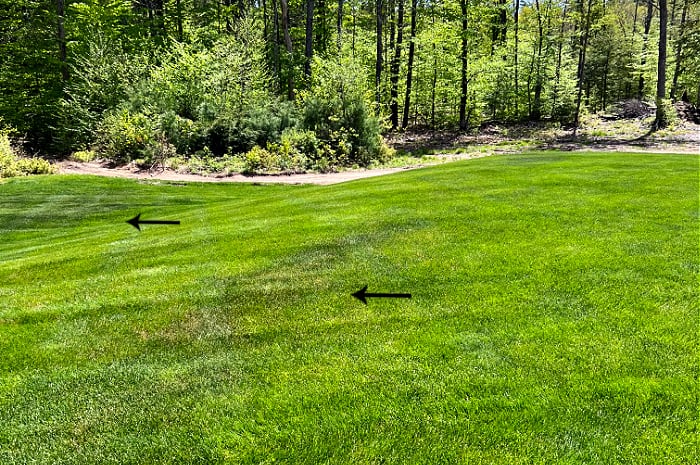
Use Quality Equipment (sprinklers and timers)
Having an inground irrigation system is such a valuable tool if you’re serious about maintaining a green lawn during the hot summer months. If it’s out of your budget, you might actually be surprised at how much of the work you can do yourself. You can rent a pipe puller for fairly cheap and run all the lines yourself. When it comes to hooking up and tying in the actual water you can hire a plumber for that part. I know there’s still a pretty good expense involved, but you will save a decent amount installing the pipe and heads yourself.
If you’re looking for a more temporary you can always setup a 4 zone automated controller, with a quality sprinkler head that’s versatile.
And these sprinkler heads are my go to for temporary set ups.
You should be able to connect 2 sprinkler heads with hoses, per zone. This gives you a total of 8 heads that you can put in your yard that can be connected to an automated timer. Not bad! This may be the temporary setup you need to give you just enough water to keep your lawn alive during the summer months. Don’t forget, there are different goals you can have when it comes to summer lawn care. To keep your lawn green during the real heat of the summer will require a reliable watering system. But if you don’t have one, this temporary setup will at least keep your lawn in a semi dormant state. It may look tan, but at least it will recover when the cooler weather comes. If your dormant summer lawn goes too long without weather it will die, so do what you can with a temporary setup to keep it alive.
Check Out These Posts Next
Follow Me
Join my free email list!
Plus, follow me on Facebook, Instagram, and Pinterest.


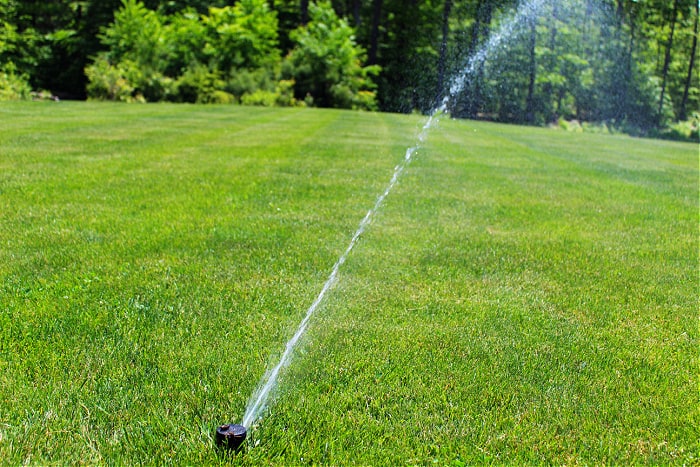

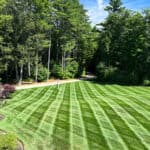

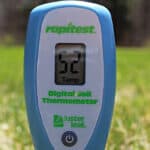
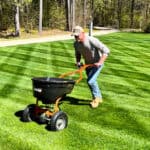
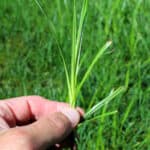
This was awesome tips and links. Thanks Mark!
My pleasure Bracken, thanks!👊